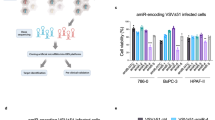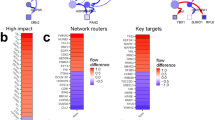Abstract
Herpes simplex virus thymidine kinase (TK) gene transfer followed by ganciclovir (GCV) administration is an approach investigated for glioblastoma treatment. The bystander effect (BE) enhances the cytotoxic effect of this strategy by allowing the diffusion of phosphorylated GCV from TK-expressing cells toward neighboring TK negative cells. This transfer of toxic metabolites is mainly mediated via gap junctions that are composed of connexins. Downregulation and/or cytoplasmic localization of connexins are common in tumors, and should be detrimental to the success of the TK/GCV strategy. In this study, we investigated the level of expression, the localization and the functionality of connexin43 (Cx43) in three glioblastoma cell lines. We showed that Cx43 was predominantly located in lysosomes and late endosomes, with only few gap junctions present at the cell surface. Surprisingly, the gap-junctional intercellular communication (GJIC) and the BE capacity were preserved, and in two of the cell lines analyzed, it was at least twice as high as compared to a control HeLa transfectant that expresses high levels of Cx43 at the cell membrane. Experiments performed in the presence of α-glycyrrhetinic acid or small interfering RNA confirmed that Cx43 was responsible for the GJIC and the BE. Our results indicate for the first time that the very limited numbers of gap junctions present in glioblastoma cells are highly functional. We thus conclude that the TK/GCV strategy is still a valuable therapeutic option to be developed for the treatment of glioblastoma patients.
This is a preview of subscription content, access via your institution
Access options
Subscribe to this journal
Receive 12 print issues and online access
$259.00 per year
only $21.58 per issue
Buy this article
- Purchase on Springer Link
- Instant access to full article PDF
Prices may be subject to local taxes which are calculated during checkout





Similar content being viewed by others
References
Stupp R, Mason WP, van den Bent MJ, Weller M, Fisher B, Taphoorn MJ et al. Radiotherapy plus concomitant and adjuvant temozolomide for glioblastoma. N Engl J Med 2005; 352: 987–996.
Moolten FL . Tumor chemosensitivity conferred by inserted herpes thymidine kinase genes: paradigm for a prospective cancer control strategy. Cancer Res 1986; 46: 5276–5281.
Culver KW, Ram Z, Wallbridge S, Ishii H, Oldfield EH, Blaese RM . In vivo gene transfer with retroviral vector-producer cells for treatment of experimental brain tumors. Science 1992; 256: 1550–1552.
Fillat C, Carrio M, Cascante A, Sangro B . Suicide gene therapy mediated by the Herpes Simplex virus thymidine kinase gene/Ganciclovir system: fifteen years of application. Curr Gene Ther 2003; 3: 13–26.
Cheng YC, Grill SP, Dutschman GE, Nakayama K, Bastow KF . Metabolism of 9-(1,3-dihydroxy-2-propoxymethyl)guanine, a new anti- herpes virus compound, in herpes simplex virus-infected cells. J Biol Chem 1983; 258: 12460–12464.
Ram Z, Culver KW, Walbridge S, Blaese RM, Oldfield EH . In situ retroviral-mediated gene transfer for the treatment of brain tumors in rats. Cancer Res 1993; 53: 83–88.
Caruso M, Panis Y, Gagandeep S, Houssin D, Salzmann JL, Klatzmann D . Regression of established macroscopic liver metastases after in situ transduction of a suicide gene. Proc Natl Acad Sci USA 1993; 90: 7024–7028.
Fick J, Barker FG, Dazin P, Westphale EM, Beyer EC, Israel MA . The extent of heterocellular communication mediated by gap junctions is predictive of bystander tumor cytotoxicity in vitro. Proc Natl Acad Sci USA 1995; 92: 11071–11075.
Mesnil M, Piccoli C, Tiraby G, Willecke K, Yamasaki H . Bystander killing of cancer cells by herpes simplex virus thymidine kinase gene is mediated by connexins. Proc Natl Acad Sci USA 1996; 93: 1831–1835.
Dilber MS, Abedi MR, Christensson B, Bjorkstrand B, Kidder GM, Naus CC et al. Gap junctions promote the bystander effect of herpes simplex virus thymidine kinase in vivo. Cancer Res 1997; 57: 1523–1528.
Pitts JD . The discovery of metabolic co-operation. Bioessays 1998; 20: 1047–1051.
Laird DW . Life cycle of connexins in health and disease. Biochem J 2006; 394: 527–543.
Tsai H, Werber J, Davia MO, Edelman M, Tanaka KE, Melman A et al. Reduced connexin 43 expression in high grade, human prostatic adenocarcinoma cells. Biochem Biophys Res Commun 1996; 227: 64–69.
Laird DW, Fistouris P, Batist G, Alpert L, Huynh HT, Carystinos GD et al. Deficiency of connexin43 gap junctions is an independent marker for breast tumors. Cancer Res 1999; 59: 4104–4110.
Mehta PP, Perez-Stable C, Nadji M, Mian M, Asotra K, Roos BA . Suppression of human prostate cancer cell growth by forced expression of connexin genes. Dev Genet 1999; 24: 91–110.
Mesnil M, Crespin S, Avanzo JL, Zaidan-Dagli ML . Defective gap junctional intercellular communication in the carcinogenic process. Biochim Biophys Acta 2005; 1719: 125–145.
Dermietzel R, Traub O, Hwang TK, Beyer E, Bennett MV, Spray DC et al. Differential expression of three gap junction proteins in developing and mature brain tissues. Proc Natl Acad Sci USA 1989; 86: 10148–10152.
Shinoura N, Chen L, Wani MA, Kim YG, Larson JJ, Warnick RE et al. Protein and messenger RNA expression of connexin43 in astrocytomas: implications in brain tumor gene therapy. J Neurosurg 1996; 84: 839–845.
Estin D, Li M, Spray D, Wu JK . Connexins are expressed in primary brain tumors and enhance the bystander effect in gene therapy. Neurosurgery 1999; 44: 361–368.
Aronica E, Gorter JA, Jansen GH, Leenstra S, Yankaya B, Troost D . Expression of connexin 43 and connexin 32 gap-junction proteins in epilepsy-associated brain tumors and in the perilesional epileptic cortex. Acta Neuropathol (Berl) 2001; 101: 449–459.
Asklund T, Appelskog IB, Ammerpohl O, Langmoen IA, Dilber MS, Aints A et al. Gap junction-mediated bystander effect in primary cultures of human malignant gliomas with recombinant expression of the HSVtk gene. Exp Cell Res 2003; 284: 185–195.
Pu P, Xia Z, Yu S, Huang Q . Altered expression of Cx43 in astrocytic tumors. Clin Neurol Neurosurg 2004; 107: 49–54.
Huang RP, Hossain MZ, Sehgal A, Boynton AL . Reduced connexin43 expression in high-grade human brain glioma cells. J Surg Oncol 1999; 70: 21–24.
Qiao J, Black ME, Caruso M . Enhanced ganciclovir killing and bystander effect of human tumor cells transduced with a retroviral vector carrying a herpes simplex virus thymidine kinase gene mutant. Hum Gene Ther 2000; 11: 1569–1576.
Hunyady L, Baukal AJ, Gaborik Z, Olivares-Reyes JA, Bor M, Szaszak M et al. Differential PI 3-kinase dependence of early and late phases of recycling of the internalized AT1 angiotensin receptor. J Cell Biol 2002; 157: 1211–1222.
Czyz J, Irmer U, Schulz G, Mindermann A, Hulser DF . Gap-junctional coupling measured by flow cytometry. Exp Cell Res 2000; 255: 40–46.
Mosmann T . Rapid colorimetric assay for cellular growth and survival: Application to proliferation and cytotoxicity assays. J Immunol Methods 1983; 65: 55–63.
Lampe PD, Lau AF . The effects of connexin phosphorylation on gap junctional communication. Int J Biochem Cell Biol 2004; 36: 1171–1186.
Goldberg GS, Moreno AP, Bechberger JF, Hearn SS, Shivers RR, MacPhee DJ et al. Evidence that disruption of connexon particle arrangements in gap junction plaques is associated with inhibition of gap junctional communication by a glycyrrhetinic acid derivative. Exp Cell Res 1996; 222: 48–53.
Mesnil M . Connexins and cancer. Biol Cell 2002; 94: 493–500.
McMasters RA, Saylors RL, Jones KE, Hendrix ME, Moyer MP, Drake RR . Lack of bystander killing in herpes simplex virus thymidine kinase-transduced colon cell lines due to deficient connexin43 gap junction formation. Hum Gene Ther 1998; 9: 2253–2261.
Sturtz FG, Waddell K, Shulok J, Chen X, Caruso M, Sanson M et al. Variable efficiency of the thymidine kinase/ganciclovir system in human glioblastoma cell lines: implications for gene therapy. Hum Gene Ther 1997; 8: 1945–1953.
Immonen A, Vapalahti M, Tyynela K, Hurskainen H, Sandmair A, Vanninen R et al. AdvHSV-tk gene therapy with intravenous ganciclovir improves survival in human malignant glioma: a randomised, controlled study. Mol Ther 2004; 10: 967–972.
Qin H, Shao Q, Curtis H, Galipeau J, Belliveau DJ, Wang T et al. Retroviral delivery of connexin genes to human breast tumor cells inhibits in vivo tumor growth by a mechanism that is independent of significant gap junctional intercellular communication. J Biol Chem 2002; 277: 29132–29138.
Segretain D, Decrouy X, Dompierre J, Escalier D, Rahman N, Fiorini C et al. Sequestration of connexin43 in the early endosomes: an early event of Leydig cell tumor progression. Mol Carcinog 2003; 38: 179–187.
Laird DW, Castillo M, Kasprzak L . Gap junction turnover, intracellular trafficking, and phosphorylation of connexin43 in brefeldin A-treated rat mammary tumor cells. J Cell Biol 1995; 131: 1193–1203.
Roger C, Mograbi B, Chevallier D, Michiels JF, Tanaka H, Segretain D et al. Disrupted traffic of connexin 43 in human testicular seminoma cells: overexpression of Cx43 induces membrane location and cell proliferation decrease. J Pathol 2004; 202: 241–246.
Acknowledgements
We are grateful to Pedro Otavio de Campos-Lima for critical reading of the manuscript and to Alan Lau for providing the rat Cx43 cDNA used to generate HeLa/Cx43 cells. This study was initiated with a grant from the Canadian Institute of Health Research (CIHR) (IC074582). MC is a Senior Research Scholar of the Fonds de la Recherche en Santé du Québec (FRSQ) and during the course of this study SC held a graduate student award from the MCETC/CIHR strategic training program.
Author information
Authors and Affiliations
Corresponding author
Rights and permissions
About this article
Cite this article
Cottin, S., Ghani, K. & Caruso, M. Bystander effect in glioblastoma cells with a predominant cytoplasmic localization of connexin43. Cancer Gene Ther 15, 823–831 (2008). https://doi.org/10.1038/cgt.2008.49
Received:
Accepted:
Published:
Issue Date:
DOI: https://doi.org/10.1038/cgt.2008.49
Keywords
This article is cited by
-
Synergistic inhibitory effect of resveratrol and TK/GCV therapy on melanoma cells
Journal of Cancer Research and Clinical Oncology (2020)
-
Inhibition of gap junction composed of Cx43 prevents against acute kidney injury following liver transplantation
Cell Death & Disease (2019)
-
HepaCAM associates with connexin 43 and enhances its localization in cellular junctions
Scientific Reports (2016)
-
In vitro and in vivo double-enhanced suicide gene therapy mediated by generation 5 polyamidoamine dendrimers for PC-3 cell line
World Journal of Surgical Oncology (2012)
-
Gap junctions in human glioblastomas: implications for suicide gene therapy
Cancer Gene Therapy (2011)



